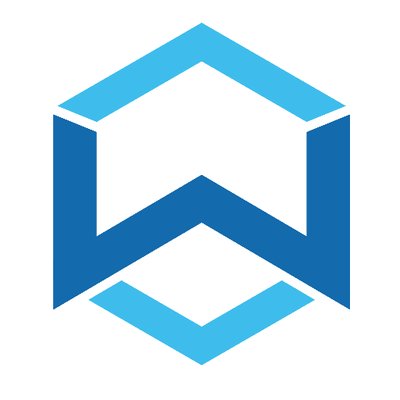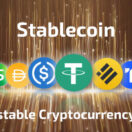Wanchain (WAN) is a cross-chain protocol that wants to create a distributed financial market for digital assets. Its goal is to build a decentralized “bank” that provides the infrastructure for an improved and modern financial framework.
Wanchain can be integrated with private or public blockchains to establish connections between different blockchains and perform cheap cross-chain asset transfers. An individual or institution can use Wanchain to set up a virtual teller window that provides services like asset exchanges, credit payments, loan issuance, and settlements based on digital assets.
Wancoin (WAN) Pricing, Market Cap and Volume
Wancoin (WAN) has a finite supply of 210 million tokens. It was launched in an ICO event that was held in October 2017 which sold 107 million tokens (51%) and raised 120,000 ETH. The Wanchain team plans to use the ICO funds as follows:
– 60% is set aside for research and development
– 10% is set aside for community development
– 10% is set aside for daily operations
– 10% is set aside for marketing campaigns
– 10% is set aside for infrastructure development
The value of WAN was first listed at ~$4 USD. While its market cap in April 2018 was ~$390 million USD, WAN has experienced some ups and downs in the months after its official release, but its price has managed to remain relatively stable.
Primary Objectives of Wanchain
In a nutshell, Wanchain has the following objectives:
Cross-Chain Asset Transfer – Wanchain connects existing digital currency networks like Ethereum and Bitcoin and completes asset exchanges without modifying the mechanism of the original chains. Wanchain also integrates with consortium chains and ensures the security and stability of cross-chain transactions.
Transaction Privacy Protection – Wanchain allows trading parties to choose to conduct transactions with privacy protection. The protocol provides privacy protection for transfers and exchanges of digital assets and anonymous protection of digital asset holders.
Functionality Extensibility – in addition to functioning as a decentralized exchange, Wanchain also wants to offer a deposit and loan service for different cryptocurrencies, issue and exchange new financial assets, and conduct transactions of assets using cryptocurrencies as a medium.
Wanchain is being developed by the Wanchain Foundation, a non-profit based in Singapore that was founded by Jack Lu, who is the co-founder of Factom and head of Wanglutech. You can learn more about the Wanchain team and its members from the project website.
What Wanchain Does
Wanchain isn’t just a decentralized exchange platform for value transfers, it also features a native token called Wancoin (WAN), smart contracts, and privacy protection protocols for smart contract token transactions.
Developers can use Wanchain to build a variety of financial applications. Here are some examples of Wanchain applications:
Cryptocurrency Debit and Credit Services – As the use of digital currencies becomes more common, the need for cryptocurrency credit and debit services will arise. Wanchain can provide the infrastructure and act as the intermediary when an individual or institution provides debit and credit services.
Cryptocurrency Payment and Settlement – Payment methods today require centralized intermediary organizations like Paypal, VISA, and Alipay to conduct the unified integration of payment and settlement. Wanchain can provide a similar function for the crypto world, but faster, cheaper, and decentralized.
Cryptocurrency Exchange – Converting and trading cryptocurrencies currently requires the use of centralized exchanges as intermediaries. Wanchain can provide a decentralized exchange that handles multiple currencies with privacy protection and features an intermediary mode for over-the-counter trading.
Digital Asset Investment and Financing – The Wanchain team believes financial assets will be recorded in distributed ledgers based on consortium chains in the future. After linking with Wanchain, consortium chains can become financial asset providers, and cryptocurrency holders can buy assets and make investments using their coins.
How Wanchain Works
Wanchain was originally forked from the Ethereum code base, but it now exists on an independent blockchain. It’s native cryptocurrency, Wancoin (WAN), is no longer an ERC20 token. Here’s a basic breakdown of Wanchain’s architecture:
Smart Contract Virtual Machine – Like Ethereum, Wanchain can also be used to issue smart contracts for different financial functions.
Native Coin – Wanchain’s native currency, Wancoin, is required to pay for transaction fees. WAN is also used as a security deposit for cross-chain verification nodes.
Proof-of-Stake (PoS) Consensus – Wanchain uses a PoS mechanism to reach consensus and incentivize cross-chain transactions.
Smart Contract Token Transaction Anonymity – Wanchain’s transactions are similar to Ethereum’s, but the developers have added a privacy mechanism that’s implemented using one-time accounts and ring signatures.
Cross-Chain Connection – Blockchains and assets that integrate with Wanchain first need to be registered with the network to make sure they can be uniquely identified. This is completed using chain and asset registration protocols.
Cross-Chain Transactions – When a registered asset is transferred from the original chain to Wanchain, the network will issue the corresponding equivalent tokens in existing contracts to ensure that the original chain assets can sill be traded on Wanchain.
Wanchain vs. Other Cryptocurrency Platforms
There are several projects that could be considered Wanchain competitors. Ripple and Stellar are looking to transform the financial market and are heavily involved with financial institutions. Ark, Cosmos, and Polkadot want to connect different blockchains and make it possible for them to exchange digital assets. And developers can already build decentralized applications using platforms like Ethereum and Cardano.
Wanchain is unique because it combines the functionality of all these projects to create one giant financial ecosystem. It’s also one of the few projects that wants to give users transactional privacy through ring signatures and one-time addresses.
Buying, Storing and Selling Wancoin
WAN can be acquired from Binance, KuCoin, Bitbns, and Huobi. Binance has the largest trading volume.
WAN is still listed as an ERC20 token on Etherscan, but it no longer uses that standard. The developers have launched the mainnet and are in the process of swapping all the ERC20 tokens, which means you can no longer securely store WAN in Ethereum wallets.
The best option for storing WAN is the Wanchain wallet available on Windows, Mac, and Linux.
Liquidity of Wanchain
The Wanchain team has been busy. They recently launched the mainnet and published an ambitious roadmap for 2018. They are planning a 2.0 release for Q2 2018 that will include Ethereum integration and a multi-coin wallet. Bitcoin integration will be added in the 3.0 release. All this activity has inspired investor confidence and is helping WAN maintain good market liquidity.






